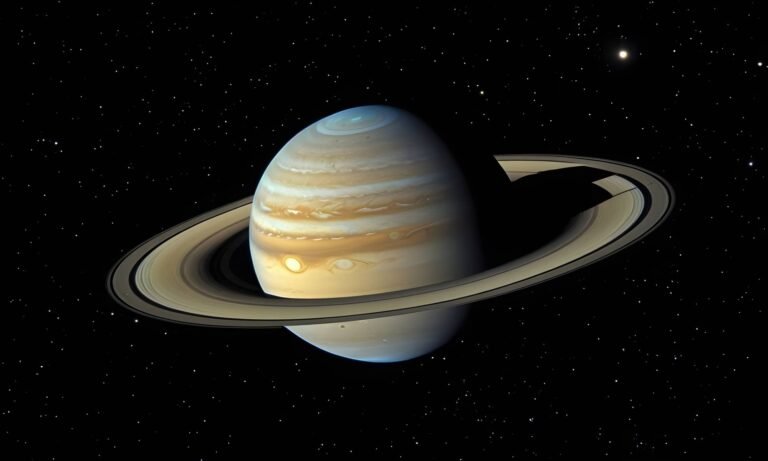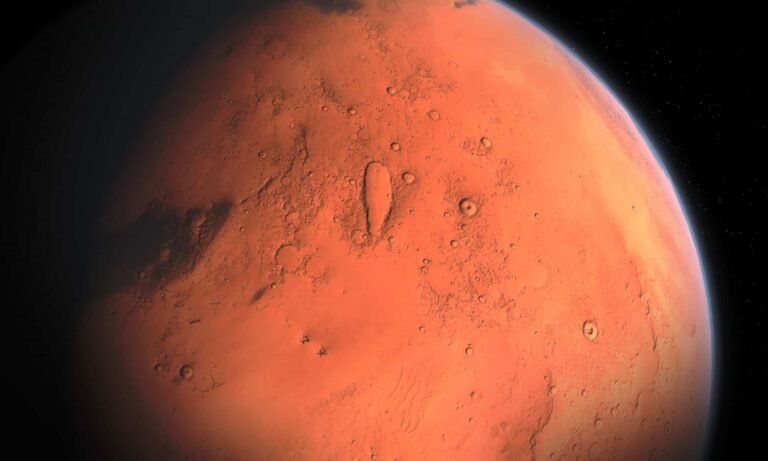Understanding Super-Earths
Super-Earths are a class of exoplanets characterized by their mass, which is larger than that of Earth but significantly less than that of gas giants like Neptune and Jupiter. Typically, a super-Earth has a mass ranging from approximately 1.5 to 10 times that of our planet. This mass range is critical in distinguishing them from both terrestrial planets and gaseous giants. The classification of super-Earths allows scientists to gain a better understanding of the diverse planetary systems that exist beyond our solar system.
One defining characteristic of super-Earths is their potential to possess solid surfaces, distinguishing them from larger gas giants. Due to their greater mass, super-Earths can maintain a substantial atmosphere composed of various gases that could support different weather and climate forms. Their stronger gravitational pull influences not only the type of atmosphere they can sustain but also geological activity. For instance, increased gravity may encourage volcanic activity and tectonic processes, crucial for understanding a planet’s potential habitability
When considering the implications of size and gravity on super-Earths, it is also essential to assess their potential for hosting life. The larger mass of super-Earths may facilitate the retention of an atmosphere conducive to life, while also providing a greater likelihood of diverse geological features. However, the higher gravity could impact the biology of any life forms that may develop, leading to adaptations unique to these environments. As astronomers continue to discover new exoplanets, understanding the characteristics of super-Earths becomes paramount in the quest for new worlds that might harbor life.
The Discovery of Exoplanets
The discovery of exoplanets, or planets outside our solar system, has revolutionized our understanding of the universe and our place within it. Various methods have been developed to detect these distant bodies, with each method offering unique insights into their characteristics and potential habitability. Among the most significant techniques are the transit method, radial velocity method, and direct imaging.
The transit method involves observing the subtle dimming of a star’s light as a planet passes in front of it. This method gained prominence with NASA’s Kepler mission, which began its observations in 2009 and successfully identified thousands of exoplanets, including numerous super-Earths – planets with masses between that of Earth and Neptune. The high precision of Kepler’s photometric measurements allowed astronomers to calculate the size and orbital period of these new worlds.
Another critical technique is the radial velocity method, which detects variations in a star’s velocity due to gravitational interactions with orbiting planets. As a planet orbits, it exerts a gravitational pull that causes its host star to wobble slightly. By measuring the star’s spectrum for shifts in wavelength, scientists can infer the presence of planets and their masses. This method has been instrumental in identifying exoplanets that exhibit traits similar to Earth.
Direct imaging, though more challenging due to the brightness of stars, employs advanced technology to capture images of planets by blocking out the starlight. This method has yielded tantalizing glimpses of exoplanets in various systems, allowing researchers to study their atmospheres and compositions directly.
Despite these advancements, astronomers continue to face significant challenges in distinguishing exoplanets from other celestial objects. Ambiguities can arise due to issues like stellar variability or the presence of background stars, necessitating continual refinement of detection methods. Missions like the Transiting Exoplanet Survey Satellite (TESS), launched in 2018, build upon the discoveries of Kepler, expanding our understanding of exoplanets and reinforcing the quest to discover new worlds beyond our own.
Some Exoplanets
Habitability Potential of Super-Earths
Super-Earths, which are exoplanets with a mass larger than Earth’s but significantly smaller than that of Uranus or Neptune, present intriguing possibilities for habitability. The potential of these planets to support life largely depends on several critical factors, including their distance from host stars, atmospheric composition, surface conditions, and the presence of liquid water. The concept of the habitable zone, often referred to as the “Goldilocks zone”, is crucial in this assessment, as it delineates the region around a star where conditions may be just right for liquid water to exist.
One of the primary considerations in evaluating super-Earths’ habitability is their location relative to their stars. Those situated within the habitable zone could potentially maintain conditions conducive to life. For example, the super-Earth known as *LHS 1140 b*, located approximately 40 light-years away, lies within the habitable zone of its host star and possesses characteristics similar to Earth, which raises interest regarding its potential to sustain life.
Atmospheric composition plays a significant role as well. A robust atmosphere can regulate temperature and protect potential life forms from cosmic radiation. For instance, models suggest that super-Earths like *K2-18 b*, which is situated in the habitable zone and exhibits water vapor in its atmosphere, may have the necessary conditions for supporting microbial life. In addition, the planet’s surface conditions must maintain stability over geological timescales, allowing for the development of life. Variations in gravity and topography may support diverse ecosystems, depending on whether these planets can harbor liquid water.
While many questions remain regarding super-Earths and their capacity to support life, ongoing research continues to uncover their fascinating properties. The study of these exoplanets significantly contributes to our understanding of habitability, leading to more focused exploration objectives in the quest for life beyond Earth.
The Future of Super-Earth Exploration

The ongoing exploration of super-Earths, a class of exoplanets with a mass greater than Earth’s but significantly less than that of Neptune, is entering a new and exciting chapter. With advancements in space observation technology, upcoming missions such as the James Webb Space Telescope (JWST) are poised to enhance our understanding of these distant worlds. Scheduled for launch, the JWST will provide unprecedented capabilities in infrared astronomy. This will allow researchers to analyze the atmospheres of super-Earths, identify the presence of essential compounds such as water vapor and carbon dioxide, and assess potential habitability.
In addition to the JWST, various future missions are in developmental stages, including NASA’s ARIEL (Atmospheric Remote sensing Infrared Exoplanet Large-survey) mission, which aims to study the atmospheres of a diverse range of exoplanets, particularly warm and hot super-Earths. ARIEL’s goal is to reveal not only the chemical makeup of these atmospheres but also to understand the physical processes affecting their formation and evolution. This can significantly impact our knowledge of planetary systems beyond our own, providing insight into how super-Earths form and evolve within their solar climates.
Looking further ahead, the exploration of super-Earths opens doors to the tantalizing possibility of human exploration. Understanding their atmospheres and potential biomes may guide future missions aimed at colonization or habitation. As our technologies continue to evolve, particularly in propulsion systems and life support, the prospect of sending humans to explore these potentially habitable worlds may become a reality. The ongoing research into super-Earths not only expands our astronomical horizons but also holds the promise of finding alternative habitats for humanity as we seek to establish a presence beyond our home planet.
What’s More
The posts in My Blog feature reflective, story-driven pieces rooted in personal and societal insights.
The topics in My Interests explore abstract, philosophical ideas and their cultural and societal impact.
👁️ 6,649 Views
















